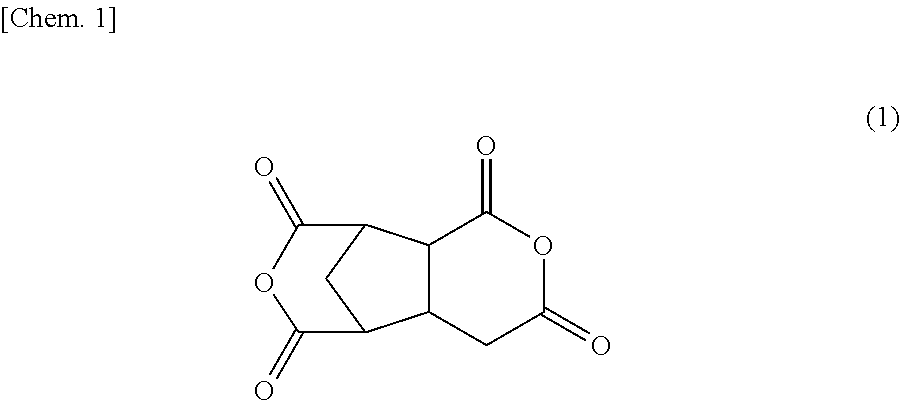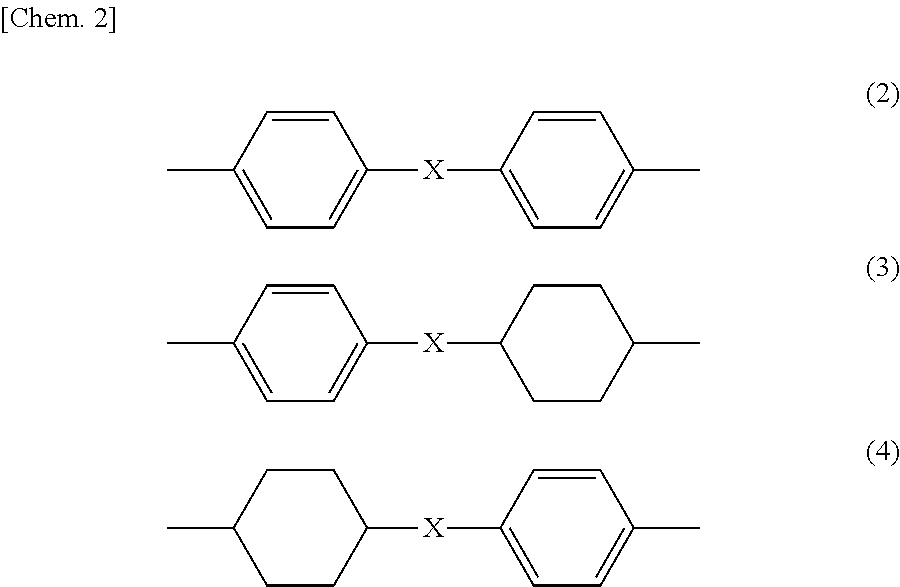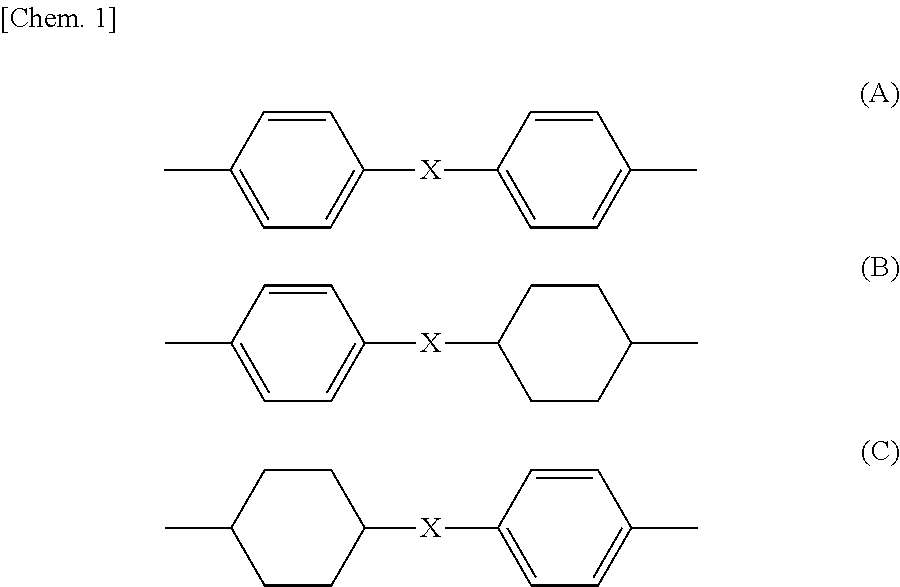Method for manufacturing liquid crystal display device
a liquid crystal display and manufacturing method technology, applied in the manufacture of electrode systems, electric discharge tubes/lamps, instruments, etc., can solve the problems of foreign matter defects, rubbing, and breaking of thin film transistor elements, and achieve the effect of improving display quality
- Summary
- Abstract
- Description
- Claims
- Application Information
AI Technical Summary
Benefits of technology
Problems solved by technology
Method used
Image
Examples
example 1
[0044]In Example 1, a photo-alignment-film material containing two polymers was used. The following describes a method for manufacturing a liquid crystal display device according to Example 1.
(Structure of Liquid Crystal Display Device)
[0045]A liquid crystal display device has an FFS-mode electrode structure, and the pre-tilt angle is 0°.
(Photo-Alignment-Film Material)
[0046]A mixture of two polymers at a weight ratio of 50:50 was used as a solid matter. One of the two polymers is a polymer including a methacrylic backbone and a photo-reactive cinnamate group in a side chain, and the other is a polyamic acid which is obtained by reacting 1,2,3,4-cyclobutanetetracarboxylic dianhydride (CBDA) and a diamine including a biphenyl structure and which is free from a photo-functional group and a side chain. A solvent used was a mixture of N-methyl-pyrrolidone and butyl cellosolve at a weight ratio of 50:50. The solid concentration was 4% by weight. The cinnamate group is a photodimerizable a...
examples 2-1 to 2-6
[0071]For the liquid crystal display devices manufactured by the methods for manufacturing a liquid crystal display device of Examples 2-1 to 2-6, the pre-heating temperatures and the results of evaluating the display quality are shown in Table 1.
(Evaluation Method of Display Quality)
[0072]The display quality was evaluated on a four-level scale. Level 1: the contrast was not lower than 1200. Level 2: the contrast was not lower than 1000 but lower than 1200. Level 3: the contrast was not lower than 500 but lower than 1000. Level 4: the contrast was lower than 500 or an alignment defect was visually observed. Those of Levels 1 to 3 were evaluated as suitable for products, whereas those of Level 4 were evaluated as not suitable for products.
(Measurement of Contrast)
[0073]The contrast was measured by the formula: (Contrast)=(luminance of white screen) / (luminance of black screen). When the display shows a white screen, a voltage for the maximum luminance is applied. When the display show...
example 2-1
[0075]The result of evaluating the display quality was Level 1 and was much better than those of Examples 2-3 to 2-6. This is presumably because the orientational order of the polymer by the self-assembly was sufficiently improved. Thus, the method for manufacturing a liquid crystal display device of Example 2-1 can sufficiently improve the display quality.
PUM
| Property | Measurement | Unit |
|---|---|---|
| pre-tilt angle | aaaaa | aaaaa |
| temperature | aaaaa | aaaaa |
| temperature | aaaaa | aaaaa |
Abstract
Description
Claims
Application Information
 Login to View More
Login to View More - R&D
- Intellectual Property
- Life Sciences
- Materials
- Tech Scout
- Unparalleled Data Quality
- Higher Quality Content
- 60% Fewer Hallucinations
Browse by: Latest US Patents, China's latest patents, Technical Efficacy Thesaurus, Application Domain, Technology Topic, Popular Technical Reports.
© 2025 PatSnap. All rights reserved.Legal|Privacy policy|Modern Slavery Act Transparency Statement|Sitemap|About US| Contact US: help@patsnap.com



